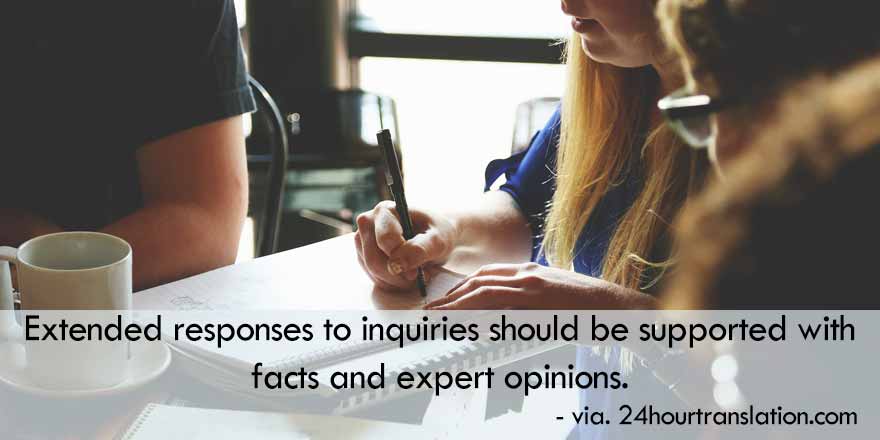As a manager of an international company, at some point you will be asked to defend a decision that affects overseas business strategies or foreign clients. Generally, this involves collaborating with people in different departments and developing a lengthy memo or a business report. Since the target audience is a foreign audience, a certified translator might need to be hired to translate your response.
For extended responses, your goal should be to analyze and present information that is supported with facts, figures and expert opinions. Since your time to prepare a document like this will be limited, you need to follow the writing process which evaluates the issue, gathers evidence, formulates a remedy and organizes your work.
Follow these steps when preparing an extended response:
1. Plan – Review materials, develop your central idea, find supporting information and structure a response
2. Draft – Write a response that follows a clear organizational structure that includes an introduction, body and conclusion.
3. Evaluate – Review your response for clarity, understanding, intelligence and transitions in addition to basic grammar and stylistic guidelines. Ensure that the organization is easy to follow and understand.
4. Submit – Make any necessary edits and changes and then submit your response to a translator.
Creating an Extended Response
Developing an extended response rests on the material that you must understand and analyze. As you
plan, identify concepts, ideas, arguments and opinions that will be essential for developing a strong
central idea.
Again remember that your draft should include an introduction, a body and a conclusion. The
introduction, which should capture the attention of the reader, should also state the central idea and list
the main supporting ideas. Think of it as a road map to guide the audience through your text. Don’t
overwhelm and bore the reader by listing all of your supporting ideas. The body should explain your
supporting ideas and present facts that support them. Your ideas should be connected to the central
idea. The ending should connect your ideas and draw conclusions that support the central idea.
Once your draft is complete, go back and evaluate it. Consider the logic behind the transitions you use
and the connections between your arguments and the evidence you present. Do your arguments and
evidence offer compelling support for your central idea? Finally, ask yourself whether you have a strong
central idea that is supported by your organizati0n.

